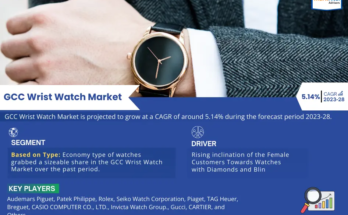The wearable AI devices market is witnessing an increase in its revenue because of people’s rising disposable income, increasing popularity of wearable consumer electronics, surging purchases of wearable AI devices for healthcare purposes, technological advancements in consumer electronics, and booming requirement for AR/VR headsets. Such consumer electronics generally feature advanced capabilities, such as heart rate, respiratory rate, and steps tracking, and an internet connection, which integrates them with mobile apps. Moreover, they analyze data in real time and advise users on better life practices, via audio and video.
The product segment of the wearable AI devices market is dominated by the wristwear category, and the situation is projected to be the same in the coming years. Wristwear includes fitness bands and smartwatches, which have become widely popular in recent years. All major consumer electronics companies, such as Fitbit, Apple, Samsung, Oppo, OnePlus, Sony, and Huawei, offer these products around the world. They are cost-effective compared to specialized products and also among the easiest to carry around, wrapped around the wrist.
Based on end use, the consumer electronics category holds the largest share in the market, in terms of value. With people’s increasing disposable income, the demand for consumer electronics, such as smartphones, tablets, laptops, and PCs, has grown significantly in a couple of decades. Moreover, this trend is now translating into a high demand for wearable AI devices, which range from smartwatches to smart clothing! They collect data on various aspects, such as how well the attire fits the body and what changes the wearer must make for a better look.
Moreover, the wearable AI devices market is growing on account of the rising usage of such products for healthcare applications. Smartwatches and fitness bands have become widely popular among those who prize health and fitness, as they allow people to track how many steps they have walked and calories they have burned, along with the heart rate, blood pressure, body temperature, and respiration rate. They feed all the real-time data to a mobile app, which then advises people on improvements to their exercise regimen and diet.
In this regard, the rising need for remote patient monitoring, exasperated by the COVID-19 pandemic, would further fuel the wearable AI devices market advance in the coming years. For instance, in August 2021, Cardiologs launched a remote patient monitoring platform that integrates the data captured by smartwatches with a cloud-based physician triage platform, to help with tracking arrhythmias. Similarly, with the help of GPS, the location of patients with Alzheimer’s disease and other issues that cause dementia (forgetfulness) can be tracked.
Since most people with dementia are old, it is even more important to track their condition and whereabouts in real time and alert the authorities if anything unfavorable happens. Hence, with the geriatric population set to increase to 1.5 billion by 2050 from 727 million in 2020 (World Population Ageing 2020; UN), manufacturers and retailers of wearable AI devices can expect a rapid widening of their consumer base in the coming years.
North America is presently the largest wearable AI devices market because of the high per capita income and rising awareness of people on new gadgets. Moreover, the prevalence of heart diseases is rather high in the region, with the AHA recording over 800,000 CVD deaths in the U.S. in 2019 alone! Therefore, since heart/pulse rate tracking is a common feature of most wearable AI devices, their usage is growing with the rising CVD burden.
Hence, the market will continue to boom as people become richer and more aware of their health and fitness.



